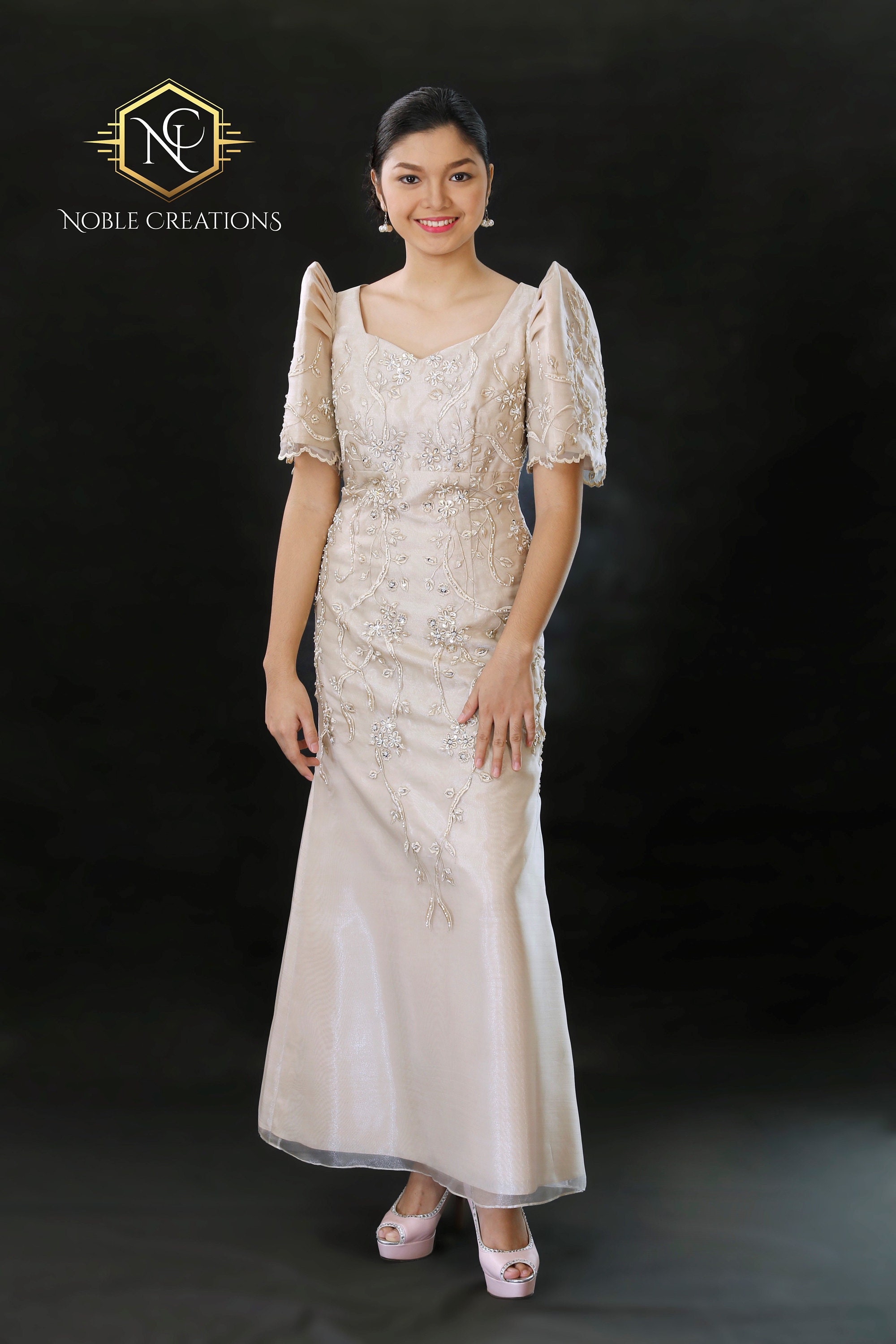By: Pierra Calasanz-Labrador
https://sg.news.yahoo.com/dress-code--filipiniana-042629271.html
So you got the invite for that much-anticipated wedding or event, but panicked a bit when you spotted these words at the bottom—Dress Code: Filipiniana. While you applaud the hosts for honoring our heritage with a patriotic theme, you can’t help but worry about what to wear.
Need some help? Here are some tips to pulling off the Filipiniana look without being mistaken for one of the wedding sponsors or Reyna Elena. Filipiniana Inspiration
Think turn-of-the-century Maria Clara in her bell-sleeved camisa, floor-length saya, panuelo, and tapis, Spanish fan in hand. Better yet, think of Imelda Marcos. While the Marcos dictatorship still leaves a bitter taste in our mouths, we must admit his undeniable style icon of a wife was always garbed in the most impeccable butterfly-sleeved ternos (a sleeker, one-piece version of the Maria Clara gown) and matching parasols when she met with heads of state in her heyday. Because of this, she brought the terno into the global spotlight.
Filipiniana is the dress du jour for Independence Day celebrations, Pinoy Pride events, SONAs (State of the Nation Address), and presidential inaugurations. (For style pegs, type “Noynoy inauguration” in your search engine for images of the yellow Filipiniana gowns worn by the presidential sisters Ballsy, Pinky, Viel, and Kris, and then-presidential girlfriend Shalani Soledad-Romulo.)
[Also check out what to wear to a Beach wedding.]
Updated Filipiniana These days, even young designers are revisiting traditional Filipino styles and giving them a refreshing twist without looking costume-y. When you want to wear something more modern while still respecting the dress code, try fusing traditional Filipiniana silhouettes/elements (butterfly sleeves, delicately embroidered kimonas) with contemporary fabrics (jersey, printed silk) or unexpected, bold colors. Take your cue from bag designer and School of Fashion and the Arts co-founder Amina Aranaz-Alunan, who wore a one-shouldered butterfly-sleeved gown by young designer Maureen Disini at last year’s Mega Pinoy Pride Ball. With its gold-and-white wave print and figure-flattering silhouette, Aranaz was the image of Filipina sophistication.Meanwhile, Bianca Gonzalez set the standard for young stylistas by pairing a daringly cropped butterfly-sleeved top with a floor-length skirt, both in hot pink.
Baro’t saya doesn’t have to be boring. How about wearing a traditional sheer kimona over a sleek sheath in a bold turquoise, magenta, or royal blue? Or how about mixing and matching an intricately-embroidered kimona or wrap saya with a printed ball skirt?
You can easily source lovely embroidered kimonas and sayas from Filipiniana handicrafts shops like Kultura Filipino, as well as your trusty Filipiniana section at department stores.
In a pinch? Substitute a kimona with sheer lace overlays—just accessorize with an antique gold tambourine necklace, a Maria Clara-inspired hair comb, or an abaca clutch for a Filipiniana touch.
[Also check out how to accessorize Lace dresses.] Indigenous fabrics and weaves Even in modern silhouettes, you can still exude a Filipiniana vibe with indigenous fabrics, such as silk cocoon, jusi, piña, abaca, and banaca (banana abaca). Simply top your LBD with a glamorous abaca wrap (like those from “wrap artiste” Dita Sandico-Ong), delicate kimonas and panuelos, or an elegant silk barong or obi wrap, and you’re good to go! Better yet, dig out your Lola’s vintage panuelo from the baul and secure it with a rhinestone brooch for a fab statement.
For cocktail parties, make a tribal chic statement in an outfit accented with a funky patadyong (a malong or tube-like garment in checkered or colorful designs), or a T’nalak weave worn as a bustier, miniskirt, jacket, belt, in the piping, or on your clutch. Be creative!
Best in Barong For an androgynous statement, how about wearing a custom-made barong with cigarette pants and killer heels? If you want to add a chic twist to it, try a peplum top in barong fabric over a pencil skirt or even satin shorts.
Another option is to look for dresses that incorporate barong embroidery. For less formal occasions that call for Filipiniana garb, consider cheongsam-collared tunics with barong embroidery.
By the way… Try to keep your silhouette sleek and modern to avoid looking like a sagala (muse) at a Santa Cruzan. At weddings, steer clear of beige and off-white, which are typical ninang colors. It also might be a good idea to find out what the entourage color theme is, so you won’t accidentally coordinate with the bridal party. With the perfect fit and a little creativity, Filipiniana can be fabulous!

